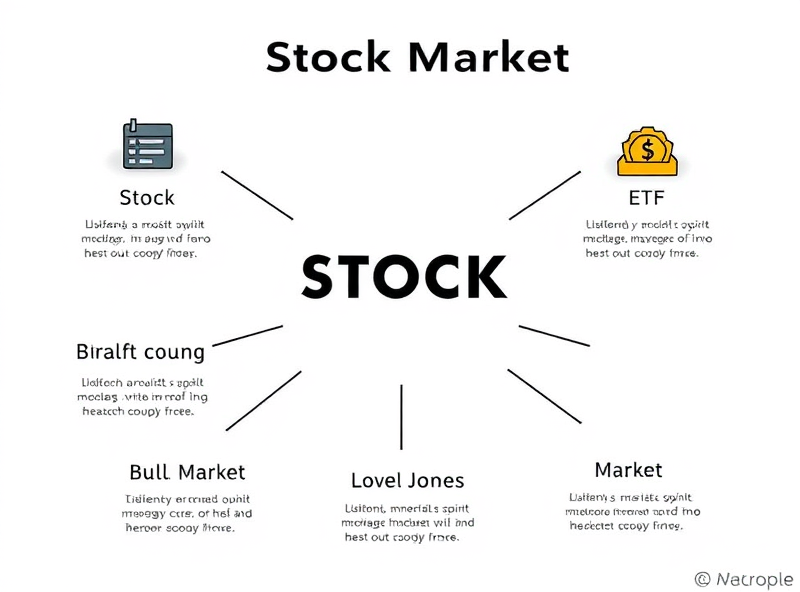
Stock Market Terms You Must Know: A Beginner’s Guide to Confident Investing

Investing in the stock market can be an exciting journey, but it can also feel overwhelming for beginners. Understanding the key terms used in the financial world is the first step toward making informed decisions and building confidence as an investor. Whether you’re looking to invest in individual stocks, ETFs, or mutual funds, having a solid grasp of the basic terminology is essential. In this guide, we’ll walk through the most important stock market terms every beginner in the U.S. should know.
What is a Stock?
A stock represents ownership in a company. When you buy a share of stock, you’re essentially purchasing a small piece of that company. Stocks are typically traded on public exchanges like the New York Stock Exchange (NYSE) or NASDAQ. Companies issue stocks to raise capital, and investors buy them with the hope that the value will increase over time.
Common vs. Preferred Stock
There are two main types of stock: common and preferred. Common stockholders have voting rights in the company and may receive dividends. Preferred stockholders typically don’t have voting rights but receive dividends before common shareholders and have a higher claim on assets in the event of liquidation.
Dividend
A dividend is a portion of a company’s earnings distributed to shareholders. Not all companies pay dividends, but those that do often do so quarterly. Dividends can be a reliable source of income for investors, especially in well-established companies.
Market Capitalization (Market Cap)
Market capitalization refers to the total value of a company’s outstanding shares. It’s calculated by multiplying the current stock price by the number of outstanding shares. Companies are often categorized as large-cap, mid-cap, or small-cap based on their market cap, which can influence investment strategies.
Bull Market vs. Bear Market
A bull market is characterized by rising stock prices and investor optimism. Conversely, a bear market occurs when stock prices fall by 20% or more from recent highs, often accompanied by widespread pessimism. Understanding these terms helps investors navigate market cycles.
Index
An index is a statistical measure of the performance of a group of stocks. Popular U.S. indices include the S&P 500, Dow Jones Industrial Average (DJIA), and NASDAQ Composite. These indices serve as benchmarks for the overall market or specific sectors.
Exchange-Traded Fund (ETF)
An ETF is a type of investment fund that holds a collection of assets, such as stocks or bonds, and is traded on an exchange like a stock. ETFs offer diversification and are generally more cost-effective than mutual funds.
Price-to-Earnings Ratio (P/E Ratio)
The P/E ratio measures a company’s current share price relative to its earnings per share (EPS). It’s a common tool used to evaluate whether a stock is overvalued or undervalued. A high P/E might indicate high growth expectations, while a low P/E could suggest a bargain—or a struggling company.
Volatility
Volatility refers to the degree of variation in a stock’s price over time. High volatility means the stock price can change dramatically in a short period, while low volatility indicates more stable price movements. Understanding volatility is crucial for managing investment risk.
Liquidity
Liquidity describes how easily an asset can be bought or sold without affecting its price. Stocks with high liquidity, such as those of large-cap companies, are easier to trade. Low liquidity can lead to larger price swings and difficulty in executing trades.
Brokerage Account
To invest in the stock market, you’ll need a brokerage account. This is an account you open with a licensed brokerage firm that allows you to buy and sell securities. Some popular U.S. brokerages include Charles Schwab, Fidelity, and TD Ameritrade.
Limit Order vs. Market Order
A market order executes a trade immediately at the current market price. A limit order, on the other hand, sets a specific price at which you’re willing to buy or sell. Limit orders provide more control, while market orders offer speed.
Initial Public Offering (IPO)
An IPO is when a private company offers shares to the public for the first time. Investing in IPOs can be risky but also rewarding if the company performs well post-launch. Notable IPOs in the past include companies like Facebook and Airbnb.
Portfolio Diversification
Diversification involves spreading your investments across different asset classes or sectors to reduce risk. A well-diversified portfolio can help protect against significant losses if one investment performs poorly.
Risk Tolerance
Risk tolerance is your ability and willingness to endure market volatility. It varies by individual and is influenced by factors like age, income, and investment goals. Understanding your risk tolerance is key to choosing the right investment strategy.
Conclusion
Learning stock market terminology is a foundational step toward becoming a confident investor. While the market can be unpredictable, having a clear understanding of these terms will help you make more informed decisions and stay calm during market fluctuations. Remember, investing is a long-term journey, and knowledge is your most valuable asset.
Disclaimer
This article is for informational purposes only and does not constitute financial, investment, or legal advice. Always consult with a licensed financial advisor or investment professional before making any investment decisions. The author and publisher are not responsible for any losses or damages resulting from the use of this information.
Sources:
– U.S. Securities and Exchange Commission (SEC): https://www.investor.gov
– Financial Industry Regulatory Authority (FINRA): https://www.finra.org








답글 남기기